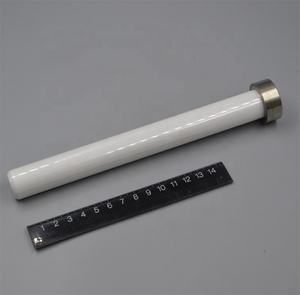Professional industry ceramic supplier, silicon nitride, silicon carbide, aluminum nitride and any other kinds of ceramics.
PRODUCT PARAMETERS
Description
Overview of Wear Resistant Boron Carbide Ceramic B4c Plate with Holes
Wear Resistant Boron Carbide Ceramic B4c Plate with Holes is an ultra-hard advanced ceramic, ranking as the third hardest material known after diamond and cubic boron nitride. Often referred to as “black diamond,” it is the premier choice for extreme applications requiring maximum hardness and lightweight properties, particularly in the field of ballistic armor and abrasive environments.
Features of Wear Resistant Boron Carbide Ceramic B4c Plate with Holes
-
Exceptional Hardness: Possesses a hardness level near that of diamond, making it ideal for abrasive and wear-resistant applications.
-
Extremely Lightweight: With a low density, it offers an outstanding strength-to-weight ratio, crucial for personal and aviation armor.
-
Outstanding Ballistic Performance: The premier material for high-performance body and vehicle armor plates, capable of defeating high-velocity threats.
-
High Neutron Absorption: An excellent neutron capture cross-section makes it a key material for nuclear reactor control rods and shielding.
-
Excellent Chemical Resistance: Highly inert and resistant to acids and alkalis, ensuring performance in corrosive environments.
-
High-Temperature Stability: Maintains its properties and structure at elevated temperatures.
Specification of Wear Resistant Boron Carbide Ceramic B4c Plate with Holes
Boron carbide ceramic plates resist wear incredibly well. This product ranks amongst the hardest compounds recognized, simply behind ruby and cubic boron nitride. It supplies impressive protection against abrasion, erosion, and bit influence. These properties make B4C plates optimal for extreme service settings requiring long life.
Adding openings to these plates serves specific functions. Openings enable simple installing and protected attachment making use of screws or pins. They likewise allow the passage of air, liquids, or various other products with the plate when needed. Common hole patterns include simple varieties or custom styles based upon the application. Exact hole positioning and diameter are important for feature.
Basic plate thicknesses typically range from around 5mm up to 25mm or more. Readily available sizes differ commonly, from little tiles to huge sheets. The openings generally feature diameters between 5mm and 20mm. Specific dimensions depend totally on customer needs. Surface area finish is normally smooth, however certain appearances are achievable.
Boron carbide’s hardness offers extraordinary resistance to sand, grit, and high-speed bits. Its reduced density makes it lighter than numerous various other shield porcelains. This material preserves toughness at really heats. It likewise stands up to attack from numerous acids and alkalis well.
These holed plates find usage in several tough industrial settings. They shield tools linings in mining, mineral processing, and power generation. They function as wear ceramic tiles in pumps taking care of rough slurries. They work as blast nozzles and sandblasting components. They are additionally vital aspects in ballistic armor systems requiring add-on points. The holes guarantee home plate integrates firmly into the last setting up.
Applications of Wear Resistant Boron Carbide Ceramic B4c Plate with Holes
Boron carbide ceramic plates with openings offer remarkable resilience. This material is extremely tough. It ranks just below diamond. This hardness makes B4C plates stand up to wear very well. They deal with extreme abrasion and continuous friction easily. These plates endure harsh conditions where metals stop working swiftly. The openings are a vital function. They are not random. These holes serve certain functions. They permit simple placing and safe attachment. Bolts or bolts go through them. This streamlines installation onto equipment or structures. The holes likewise lower home plate’s total weight dramatically. This weight saving matters. It is vital for mobile devices or applications needing lighter components. Much less weight means simpler handling and reduced stress and anxiety on assistances.
Demanding industries rely upon this tough ceramic. Wear parts see constant abuse. B4C plates with holes are excellent here. They shield crucial surfaces. These plates line chutes taking care of unpleasant materials. They secure devices in mining and mineral handling. Sand and gravel swiftly wear out steel. B4C plates last much longer. The openings guarantee they remain securely repaired in position. Ballistic shield utilizes these plates too. The severe firmness quits bullets and pieces. The holes make it possible for assimilation into armor systems. Weight decrease is crucial for wearable security. Every ounce counts for the individual.
Industrial nozzles profit substantially. High-pressure sandblasting nozzles endure punishing wear. Solid boron carbide nozzles are outstanding. Plates with holes use style flexibility for personalized nozzle shapes. The material resists erosion much better than metal options. Electronic devices making uses these plates. They create precise jigs and components. Semiconductor wafers are delicate. B4C components hold them securely without scraping. The openings allow vacuum cleaner or mechanical securing systems. This product keeps its toughness at heats. It resists chemical strike too. These buildings increase its usefulness throughout lots of tough atmospheres.
Company Profile
Tanki New Materials Co.Ltd. focus on the research and development, production and sales of ceramic products, serving the electronics, ceramics, chemical and other industries. Since its establishment in 2015, the company has been committed to providing customers with the best products and services, and has become a leader in the industry through continuous technological innovation and strict quality management.
Our products includes but not limited to Aerogel, Aluminum Nitride, Aluminum Oxide, Boron Carbide, Boron Nitride, Ceramic Crucible, Ceramic Fiber, Quartz Product, Refractory Material, Silicon Carbide, Silicon Nitride, ect. please feel free to contact us.
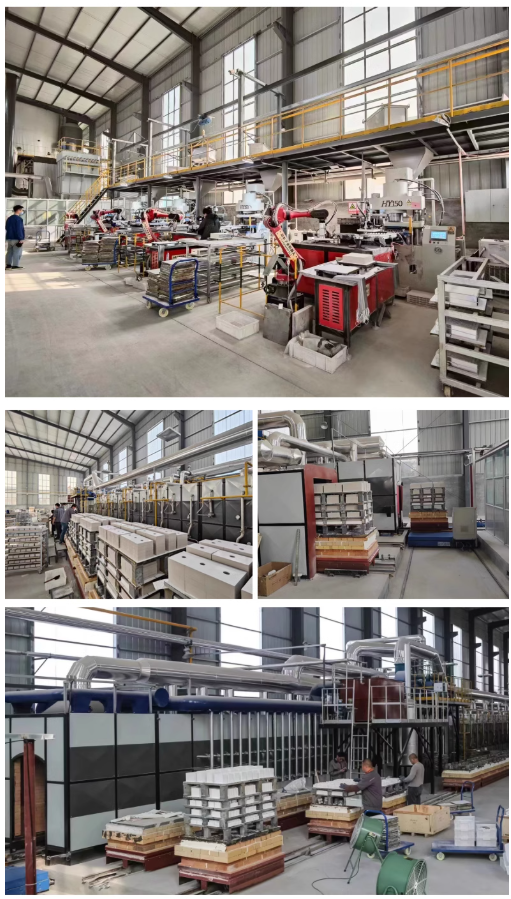
Payment Methods
T/T, Western Union, Paypal, Credit Card etc.
Shipment Methods
By air, by sea, by express, as customers request.
5 FAQs of Wear Resistant Boron Carbide Ceramic B4c Plate with Holes
Wear Resistant Boron Carbide Ceramic B4C Plate with Holes: Key Questions
What is this B4C plate?
This is a flat sheet made from boron carbide ceramic. Boron carbide is incredibly hard. It resists wear extremely well. The plate has pre-drilled holes. The holes allow easy mounting or attachment.
Why choose boron carbide?
Boron carbide is one of the hardest materials known. Only diamond is harder. This extreme hardness makes it perfect for stopping abrasion. Things rubbing against it wear down very slowly. It also resists damage from impacts. It works well in tough environments. It stays strong under high pressure. It handles very high heat too. It is much lighter than steel.
What’s the point of the holes?
The holes are crucial for installation. You need to fix the plate securely. Bolts, rivets, or other fasteners go through the holes. This attaches the plate to machinery, vehicles, or structures. The holes are placed precisely. This ensures a strong, stable fit. Proper mounting prevents the plate from moving or cracking.
How do you install this plate?
Installation needs care. Clean the mounting surface first. Position the plate correctly. Align the holes perfectly. Use suitable bolts or rivets. Tighten the fasteners evenly. Do not overtighten. Overtightening can crack the ceramic. Follow the supplier’s torque specifications. Use washers if recommended. This spreads the load and protects the ceramic.
Are there limits to using this plate?
Yes, understand its limits. Boron carbide handles high heat well. It performs best up to around 500°C (932°F) in air. Avoid sudden temperature shocks. Extreme thermal cycling can cause cracks. It is very hard but somewhat brittle. Avoid sharp, heavy impacts directly on edges. It is not ideal for bending or twisting forces. Use it where surfaces face mainly sliding wear or abrasion.
REQUEST A QUOTE
RELATED PRODUCTS
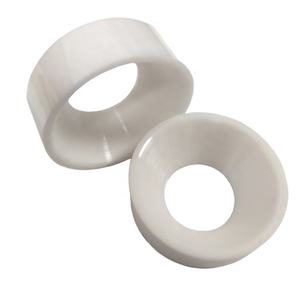
High Pressure Resistant Boron Carbide Ceramic B4c Industry Material
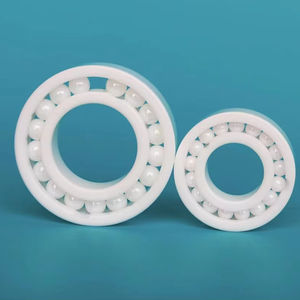
High Hardness Boron Carbide B4c Ceramic Strips Plates
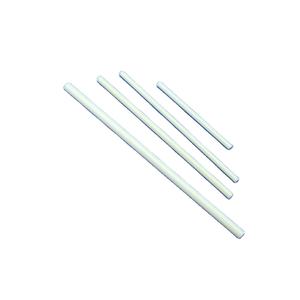
High Mechanical Strength Boron Carbide Ceramic B4c Round Sheet
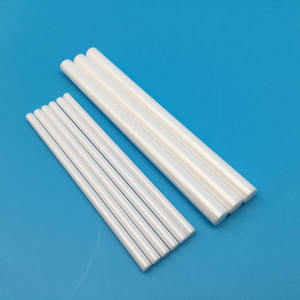
Custom Size High Hardness Boron Carbide Ceramic Strips
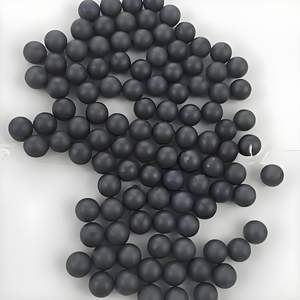
Bproof Superior Boron Carbide Hexagon Ceramic Multi-Hit for Armor Protection
